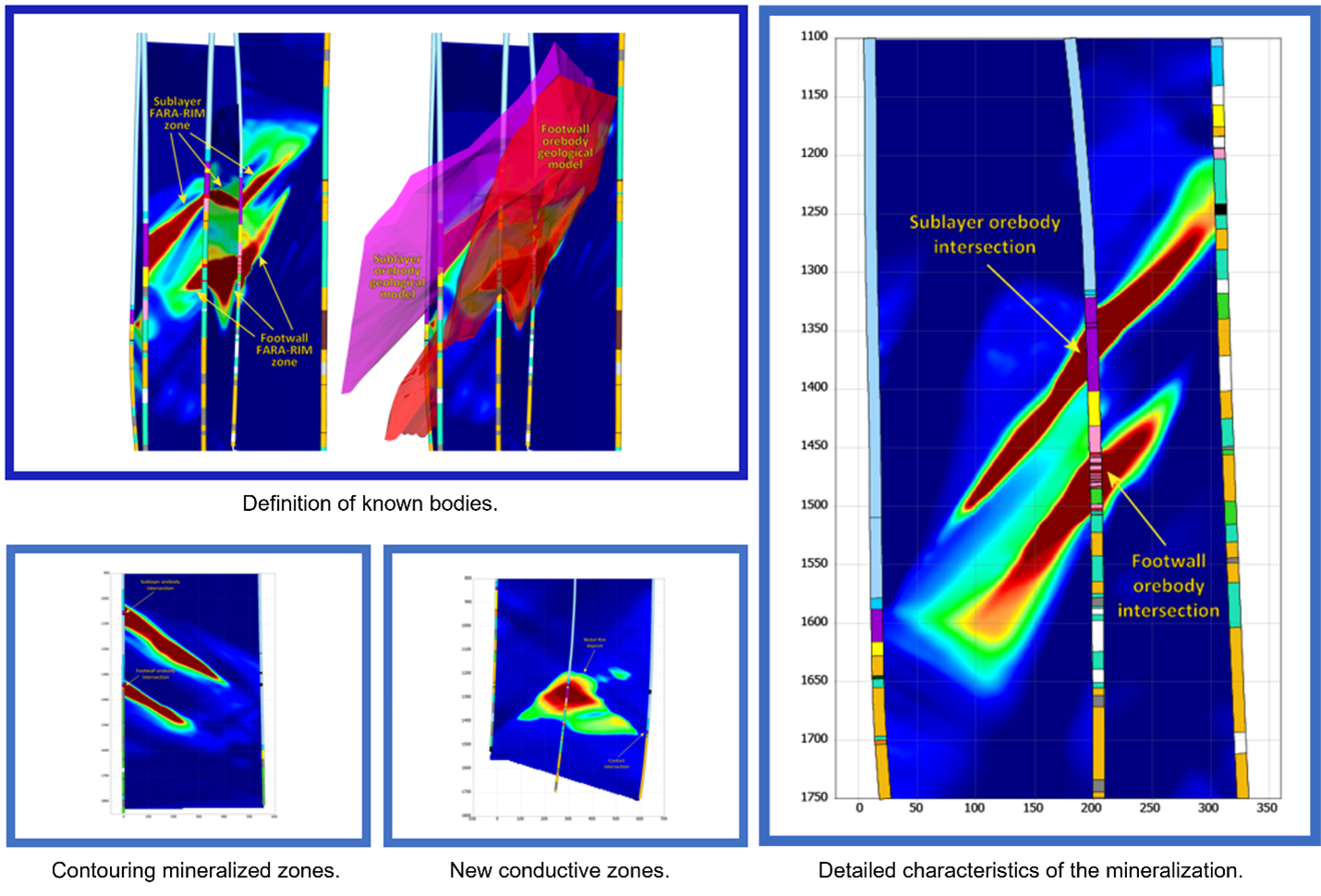
Using Radio Imaging Tomography to enhance exploration efficiency and resource optimization
Case Study: Nickel Rim South Mine, Sudbury, Canada
Nickel Rim South, situated in the Sudbury Basin, is a nickel, copper and precious metal deposit. The Basin, a result of a significant meteorite impact, features complex geological structures including layered norites, gabbros, and breccias, known for their rich sulfide mineralization. This mineralization typically occurs along contact zones within these formations, making the area highly prospective for exploration.
Surveying method
The FARA System, utilizing radio imaging tomography, was employed to explore and delineate sulfide mineralization. The system uses low-frequency electromagnetic waves to create detailed resistivity sections of the subsurface, revealing conductive zones indicative of potential sulfide deposits. This approach was crucial for understanding the complex geology of the Sudbury Basin. The FARA System provided several key insights at Nickel Rim South:
- Finding new unexplored objects: The survey identified significant conductive zones that were not apparent from core logs. These zones corresponded to contact-type nickel deposits and included areas of previously unknown mineralization, providing new targets for exploration.
- Definition of known bodies: Data from the survey allowed for the development of a detailed model of the deposit, revealing elongated mineralized zones that pinched out at certain distances. This information was essential for planning the development of the mine.
- Contouring mineralized zones: The FARA System effectively outlined the central ore zones and identified that certain mineralized zones were controlled by faulting, a finding supported by subsequent logging.
- New features of discovered mineralization: The survey revealed detailed characteristics of the mineralization, such as thickness, boundaries, and inclination, enhancing the understanding of the ore body’s structure.
- Crosshole space sterilization: As new boreholes are drilled, these features could be used to optimize drilling efforts, potentially reducing costs by avoiding unnecessary drill targets. This approach would further enhance exploration efficiency, ensuring resources are focused on the most promising zones and guiding future development in complex geological settings.
 The FARA survey successfully mapped conductive zones and identified their boundaries.
The FARA survey successfully mapped conductive zones and identified their boundaries.


